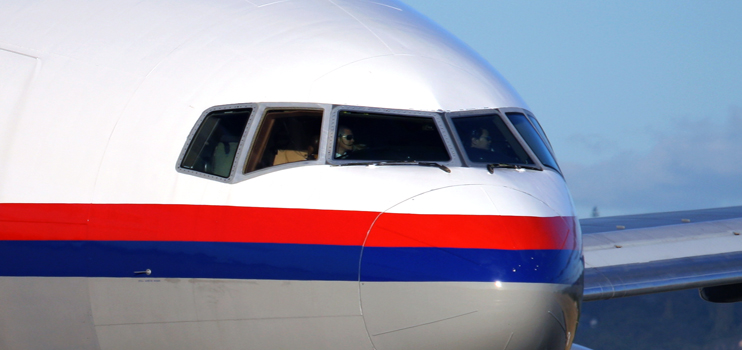In the wake of the tragic crash of Germanwings Flight 9525 the airline industry has been quick to adopt cockpit procedures designed to help prevent the kind of thing that allegedly brought down the A320. A French prosecutor contends 9525’s first officer Andreas Lubitz’s “intention [was] to destroy this plane,” by locking the captain out of the cockpit and commanding the aircraft to descend on a fatal trajectory into the Alps March 24th. All 150 souls on board perished.
Following post-9/11 U.S. regulations, the European Aviation Safety Agency published “a temporary recommendation for airlines to ensure that at least two crew, including one qualified pilot, are in the [cockpit] at all times of the flight.” Airlines are now making that standard.
That is the easy part. Far more difficult is what others propose: increased, on-going psychological testing of pilots to make sure bad apples aren’t in the cockpit to begin with.
In many cases it all starts with a pre-employment psychological assessment. Most airlines do such testing, focusing on pilots’ attitude about themselves, how they solve problems, how they deal with others. There is no standard pre-employment test by which airlines fashion a psychological profile of a prospective pilot.
“Can we do more than [psychologically] screen pilots when they’re first hired? Sure,” asserts Kit Darby, a retired United Airlines captain. “We can do it annually. We can do it every six months. We can do it every five years. Anything would be more than what we do now.” Darby, now heads the U.S.-based aviation consultancy KitDarby.com.
Do Forms Fall Short?
If commercial airline pilots are under 40 they must have a medical exam once a year, if over 40 every six months. In the United States it’s administered by a Federal Aviation Administration-designated doctor. This is essentially a physical examination. In a prepared response to AirlineRatings.com’s questions, FAA says, “the medical application form includes questions pertaining to the mental health of the pilot.” In other words, it’s the pilot’s duty to tell the doctor if he or she thinks something’s wrong by checking the right box.
FAA says the designated Aviation Medical Examiner, “will use this self-disclosure to ask additional questions about mental health issues. The AME can order additional psychological testing.”
Psychological screening is “very cursory now,” asserts Darby. “We’re counting…on all pilots to self-report if they have an issue and for other pilots around them to report them if they’re acting strange.” As for fellow pilots assessing the mental state of their colleagues, Darby says they’re simply not trained to do it.
The International Civil Aviation Organization (ICAO) establishes standards for the medical exams, but in some instances those standards can be met by something as simple as filling in a form.
Once basic ICAO requirements have been met the member nations and airlines can make the physical and mental assessments as comprehensive as they please.
Darby believes a pilot answering a few questions embedded in a medical form falls short of an “extensive” psychological exam.
If psychological screening can be less than extensive so can communication between doctors. Retired Boeing 747-400 Captain R. Michael Baiada says pilots can “go to their personal doctor with an issue, whether it’s physical or mental.” Problem is “that information probably would never get to the FAA doctor if the pilot chooses not to reveal it.”
Baiada, who now heads up the U.S.-based aviation consultancy ATH Group, says it is unlikely a pilot’s personal physician talks to the FAA doctor. This despite the fact that FAA says it requires pilots to report “any health professional visits during the previous three years.”
Two issues here: is the psychological information gleaned from the annual or bi-annual medical checks sufficient, and is it communicated among those who need to know? Both questions may be far more than academic as investigators sift through the remains of Andreas Lubitz’s life.
Kit Darby says, “serious abnormalities [are] rarely found,” by the time a pilot goes to work for an airline. “Typically, a civilian pilot getting hired by a major U.S. airline has about 6,000 hours [flight time],” he says. “You don’t get people who are very outside the norm who have gotten that far.”
Lubitz had 630 flight hours, joining Germanwings in September 2013 from the Lufthansa Flight Training School in Bremen. What demons may have driven the 28-year old aviator to allegedly kill himself and 149 other human beings remains to be seen.
What also remains to be seen is how the industry responds in the regulatory arena. Calls for more thorough, more frequent psychological testing, believe Darby, could well meet with opposition among pilot’s unions. “Pilots are going to resist” pressure for increased screening, he says. “They’re already heavily monitored…The unions are going to fight it.”
In a prepared statement Air Line Pilots Association, International, the world’s largest pilot union, says, “Airline pilots in the United States and Canada are subject to rigorous screening prior to being hired, including an assessment of the pilot’s mental and emotional state. Once hired, pilots are evaluated continuously throughout their careers…all flight and cabin crewmembers monitor and evaluate each other while on duty.”
The same is true in most areas of the world.
A Bit of Perspective, Please
Perspective is always a casualty when it comes to public perception of air crashes. International Air Transport Association Director General and CEO Tony Tyler says; “Each day about nine million people board aircraft as passengers. We work very hard to earn and keep their trust by transporting them safely to their destination.”
Our trust in the people up front in the cockpit is implicit and ingrained. That’s why something such as Germanwings 9525 shakes us so. Crashes of any kind are rare despite the rash of them we’ve seen over the last year. Crashes where a pilot purposely precipitates the tragedy are rarer still.
It’s a perspective too easily forgotten.
























